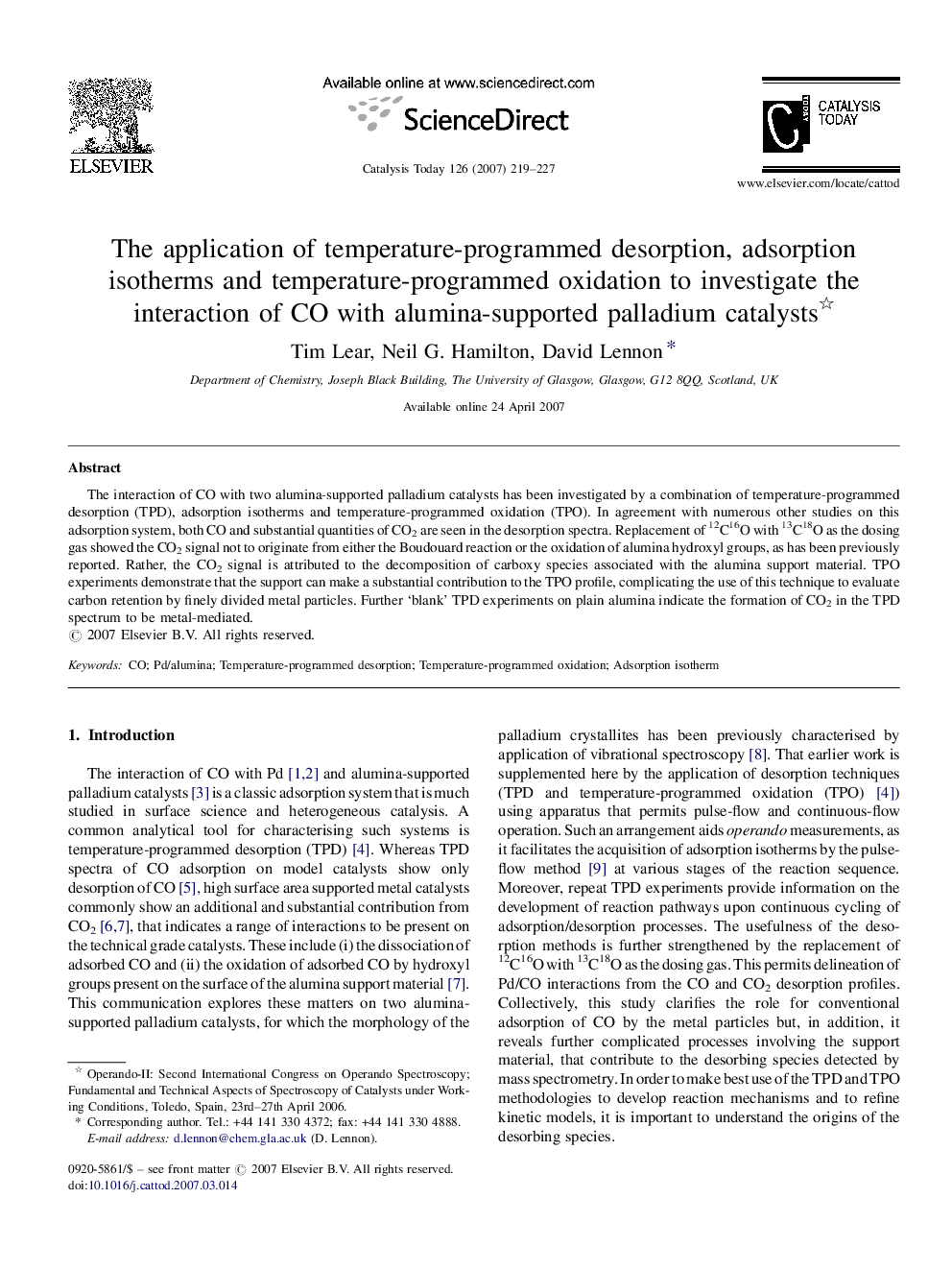| Article ID | Journal | Published Year | Pages | File Type |
|---|---|---|---|---|
| 57979 | Catalysis Today | 2007 | 9 Pages |
The interaction of CO with two alumina-supported palladium catalysts has been investigated by a combination of temperature-programmed desorption (TPD), adsorption isotherms and temperature-programmed oxidation (TPO). In agreement with numerous other studies on this adsorption system, both CO and substantial quantities of CO2 are seen in the desorption spectra. Replacement of 12C16O with 13C18O as the dosing gas showed the CO2 signal not to originate from either the Boudouard reaction or the oxidation of alumina hydroxyl groups, as has been previously reported. Rather, the CO2 signal is attributed to the decomposition of carboxy species associated with the alumina support material. TPO experiments demonstrate that the support can make a substantial contribution to the TPO profile, complicating the use of this technique to evaluate carbon retention by finely divided metal particles. Further ‘blank’ TPD experiments on plain alumina indicate the formation of CO2 in the TPD spectrum to be metal-mediated.
